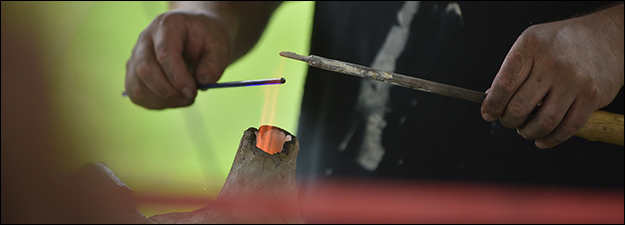Before/After Constantinus Africanus: Medicine in the Beneventan Zone and Beyond I
Sponsoring Organization(s)
Society for Beneventan Studies
Organizer Name
Richard F. Gyug
Organizer Affiliation
Fordham Univ.
Presider Name
Richard F. Gyug
Paper Title 1
De innumeris remediorum utilitatibus: Constructing a Medical Recipe Collection at Early Medieval Montecassino
Presenter 1 Name
Jeffrey Doolittle
Presenter 1 Affiliation
Fordham Univ.
Paper Title 2
Constantine's Viaticum in the Beneventan Zone and Beyond
Presenter 2 Name
Andrew J. M. Irving, Brian P. Long
Presenter 2 Affiliation
Univ. of Notre Dame/Cologne Center for eHumanities, Whitman College
Paper Title 3
Byzantine Medicine at Monte Cassino during the Time of Constantine the African
Presenter 3 Name
F. Eliza Glaze
Presenter 3 Affiliation
Coastal Carolina Univ.
Start Date
14-5-2016 10:00 AM
Session Location
Schneider 1225
Description
Constantinus Africanus (d. ante 1098/99), the first known translator to render Arabic medical literature into Latin, came from North Africa and eventually settled at the monastery of Montecassino under the famed abbot Desiderius (d. 1087). Despite the impact of his work, much remains to be investigated about the texts he produced and the larger revolution in western medicine he facilitated. This session, one of two, concerns medicine and the production of medical manuscripts as a mode of communication and activity that connected the region of the Beneventan script, with Montecassino its most prominent center, to its neighboring Muslim and Greek regions, but also to the rest of Latin Europe north of Rome.
-Richard Gyug
Before/After Constantinus Africanus: Medicine in the Beneventan Zone and Beyond I
Schneider 1225
Constantinus Africanus (d. ante 1098/99), the first known translator to render Arabic medical literature into Latin, came from North Africa and eventually settled at the monastery of Montecassino under the famed abbot Desiderius (d. 1087). Despite the impact of his work, much remains to be investigated about the texts he produced and the larger revolution in western medicine he facilitated. This session, one of two, concerns medicine and the production of medical manuscripts as a mode of communication and activity that connected the region of the Beneventan script, with Montecassino its most prominent center, to its neighboring Muslim and Greek regions, but also to the rest of Latin Europe north of Rome.
-Richard Gyug

